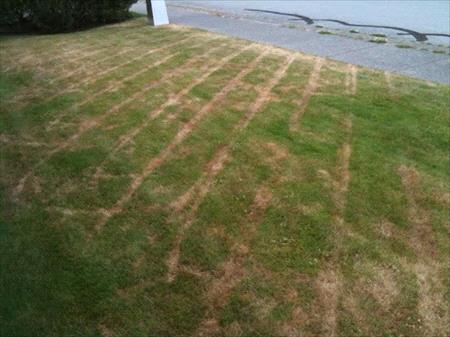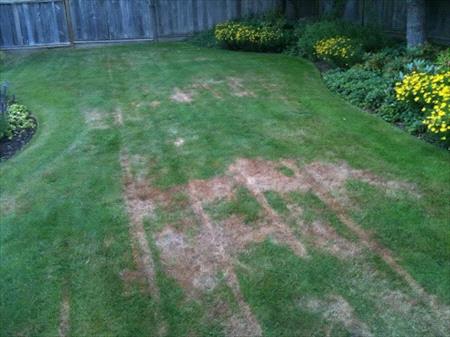Your Cart

LEARN YOUR LAWN: Pythium
Request a Quote
What Is Pythium Blight?
Pythium Blight is a fungal disease that affects all types of turfgrass, including lawns, golf courses, and sports fields. If the conditions are ideal for the fungus, Pythium Blight causes the grass to turn brown and die, potentially within a few hours.
The disease thrives in warm, wet weather and can spread rapidly, making it difficult to control. During cooler parts of the season, the fungus grows more slowly and generally does not infect foliage, though in some cases it will cause the roots to rot. Pythium Blight is primarily found on poorly drained soils with a pH greater than 7.0 and is exacerbated by high nitrogen fertility from quick release nitrogen.
The symptoms of Pythium Blight can include the following.
The grass will appear greasy with sudden wilting or yellowing of the leaves and a foul odor from the affected area.
Water-soaked leaves will collapse and become matted together by a cottony, purplish-gray or white mass called mycelium.
Damage will often appear in the lawn as long streaks, because the spores and mycelium are spread by mowing equipment or drainage patterns.
How Can I Control Pythium Blight In My Lawn?
Pythium Blight can be difficult to control because it occurs so rapidly. In most cases, a change in the weather can help reduce the spread of this disease. You can also adjust your cultural practices to improve the health of the lawn and further limit the spread of the disease. However, depending on the size of the infestation and the scope of the damage, other forms of control may be necessary.
A thick, healthy, well-maintained lawn is the best line of defense. Here’s how you can adjust your beneficial cultural practices to reduce the spread of Pythium Blight:
Avoid Watering: Under normal circumstances, you should be watering each area of your lawn for 30-45 minutes, twice per week, in the early morning so the turf is dry by nightfall. However, you should avoid watering when the disease is active.
Avoid Mowing: You should avoid mowing when the disease is active. If you do have to mow, make sure your mower blade is razor sharp, so that the blade does not fray the tips of the grass, spreading the disease. Maintain a regular mowing schedule throughout the growing season. In general, you should keep your lawn between 2 ½ and 3 ½ inches high, but during the hottest weeks of summer, you may allow the grass to grow as high as 4 inches. Never remove more than ⅓ of the grass blade at each mowing.
Fertilize Regularly: Regular applications of Weed Man’s specially formulated, slow-release granular fertilizer will help provide your lawn with adequate nutrients. These applications are timed specifically to avoid over fertilizing the lawn.
Core Aeration: Aerating your lawn can improve soil drainage and help reduce the likelihood of lawn diseases. This will also alleviate soil compaction and allow water and nutrients to penetrate deeper into the soil.
Your local Weed Man professional may be able to offer other solutions and recommend the best form of treatment that is available to improve the conditions of your lawn.
 English (USA)
English (USA) Français (CANADA)
Français (CANADA)

